


JOSEPH-LOUIS LAGRANGE 1736 - 1813
(G2, G3a, G3b, G3c)
xxxxxThe Italian-born Joseph Louis Lagrange, a brilliant mathematician, gained fame before the age of 20. He was director of mathematics at the Berlin Academy of Sciences from 1766 and then, having been appointed a member of the French Royal Academy in 1787, spent the rest of his life in Paris, lecturing at the École Polytechnique. His work showed an enormous range of ability, and prompted advances in a large number of disciplines, including algebra, analytic and celestial mechanics, the theory of numbers, the propagation of sound, probability, and the calculus of variation. His major work was Analytic Mechanics, published in 1788.
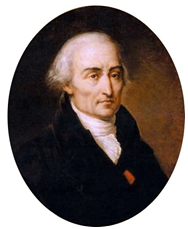 xxxxxJoseph-Louis Lagrange became one of the leading mathematicians and physical scientists in Europe before he was out of his teens. He was born in Turin and, at the age of 18 was appointed professor of geometry at the Artillery School there. The following year, building upon results achieved by Isaac Newton, he published a paper on the propagation of sound in which his theory of variations was praised by European scientists, including the eminent Swiss mathematician Leonhard Euler, then working in Berlin.
xxxxxJoseph-Louis Lagrange became one of the leading mathematicians and physical scientists in Europe before he was out of his teens. He was born in Turin and, at the age of 18 was appointed professor of geometry at the Artillery School there. The following year, building upon results achieved by Isaac Newton, he published a paper on the propagation of sound in which his theory of variations was praised by European scientists, including the eminent Swiss mathematician Leonhard Euler, then working in Berlin.
xxxxxSuch was the reputation he gained in these early years that in 1766 he succeeded Euler as director of mathematics at the Berlin Academy of Sciences. He was invited to take up this post by none other than Frederick the Great himself, anxious that “Europe’s greatest king should have at his court its greatest mathematician”. Then in 1787 he was appointed a member of the French Royal Academy and moved to Paris. Here, in 1793, he worked on the committees that introduced the metric system and the French Republican calendar. Four years later he was appointed professor at the École Polytechnique, a school he had helped to found in 1794. The lectures he gave there were later published in his Théorie des fonctions analytiques (Theory of Analytic Functions) of 1797, and his Leçons sur le calcul des fonctions (Lessons on the Calculus of Functions) in 1804.
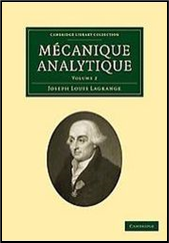 xxxxxHis major work, Mécanique analytique (Analytic Mechanics), produced in 1788, was a brilliant summing up of the advances made in mechanics during the hundred years since Newton. Applying his own calculus of variations, he virtually turned the whole subject into a branch of mathematical analysis. In the field of celestial mechanics he again used findings made earlier by Newton, this time to predict the movement of a planet when affected by the gravitational force exerted by others. Prize-winning papers included a study on the libration (slight movements) of the moon, and a theoretical appraisal of the motions of Jupiter’s satellites. His outstanding contribution across the whole field of mathematics included his work on partial differential equations, probability, the theory of numbers, and on the origins of the calculus of variation. Fundamental advances were also made in algebra, contained in his Réflexions sur la résolution algébrique des équations (Reflections on the Algebraic Resolution of Equations), published in 1770.
xxxxxHis major work, Mécanique analytique (Analytic Mechanics), produced in 1788, was a brilliant summing up of the advances made in mechanics during the hundred years since Newton. Applying his own calculus of variations, he virtually turned the whole subject into a branch of mathematical analysis. In the field of celestial mechanics he again used findings made earlier by Newton, this time to predict the movement of a planet when affected by the gravitational force exerted by others. Prize-winning papers included a study on the libration (slight movements) of the moon, and a theoretical appraisal of the motions of Jupiter’s satellites. His outstanding contribution across the whole field of mathematics included his work on partial differential equations, probability, the theory of numbers, and on the origins of the calculus of variation. Fundamental advances were also made in algebra, contained in his Réflexions sur la résolution algébrique des équations (Reflections on the Algebraic Resolution of Equations), published in 1770.
xxxxxA quiet, learned man with no strong political views, he survived unchallenged throughout the French Revolution, working in apartments provided for him in the Louvre. In 1808 Napoleon made him a member of the Legion of Honour and a Count of the Empire. He suffered from ill-health for much of his life, but, nonetheless, lived to the age of 77.
xxxxxIncidentally, it was Lagrange who, upon the execution of the brilliant French chemist Antoine Lavoisier - guillotined in May 1794 for crimes against the state - remarked: “It required only a moment to sever the head, but perhaps a century will not be sufficient to produce another like it”.
Acknowledgements
Lagrange: 18th century, artist unknown. Laplace: by the French artist Sophie Feytaud (1829-1850), 1842 – Académie des Sciences, Paris. Diagram: Nebular Hypothesis - contained in the Internet Encyclopedia of Science, the work of the English science writer Dr David Darling (born 1953). Legendre: this portrait, the only one known to be in existence, features in an album containing watercolour caricatures of seventy-three famous mathematicians, the work of the French artist Julien-Léopold Boilly (1796-1872), produced in 1820. Rumford: by the English portrait painter Thomas Gainsborough (1727-1788), 1783 – Fogg Art Museum, Harvard University, Cambridge, MA. Institution: by the English watercolour artist Thomas Hosmer Shepherd (1793-1864), c1838.
Including:
Pierre-Simon de Laplace,
Adrien Marie Legendre,
and Count Rumford
(Benjamin Thompson)

xxxxxThe French scientist Pierre-Simon de Laplace (1749-1827) was another outstanding mathematician and astronomer at this time. His Treatise on Celestial Mechanics, begun in 1799 but not completed until 1825, proved the invariability of all planetary motions, and explained the ebb and flow of tides. His Explanation of the World System in 1796 contained his nebular hypothesis, the theory that the solar system originated from a vast rotating cloud of incandescent gas. In mathematics he perfected the theory of probability, and his “Laplace equation” proved of immense value in analysing problems in physics. He was also interested in optics, and he worked for some time with the French chemist Antoine Lavoisier, measuring the physical effects of heat, and studying the nature of respiration.
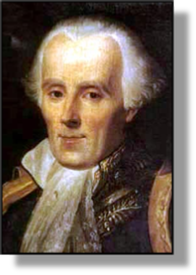 xxxxxAnother outstanding mathematician and astronomer at this time was the Frenchman Pierre-Simon de Laplace (1749-1827). His major work Traité de méchanique céleste (Treatise on Celestial Mechanics ), a five-volume survey begun in 1799 and not completed until 1825, applied the effects of Isaac Newton’s theory of gravitation upon the solar system in general and the earth in particular. His research proved the invariability of all planetary motions - thereby suggesting the stability of the solar system - and explained the ebb and flow of tides and the precession of the equinoxes. Also included were his findings as to the variations in the orbits of Jupiter and Saturn, arrived at in the mid-1780s.
xxxxxAnother outstanding mathematician and astronomer at this time was the Frenchman Pierre-Simon de Laplace (1749-1827). His major work Traité de méchanique céleste (Treatise on Celestial Mechanics ), a five-volume survey begun in 1799 and not completed until 1825, applied the effects of Isaac Newton’s theory of gravitation upon the solar system in general and the earth in particular. His research proved the invariability of all planetary motions - thereby suggesting the stability of the solar system - and explained the ebb and flow of tides and the precession of the equinoxes. Also included were his findings as to the variations in the orbits of Jupiter and Saturn, arrived at in the mid-1780s.
xxxxxIt was in 1796, in his Expositon du système du monde (Explanation of the World System), that he put forward the nebular hypothesis of stellar evolution, based on his theory that the Solar System originated from a vast rotating cloud of incandescent gas which, contracting and rotating at an ever increasing speed, eventually broke up, giving birth to the planets and the sun. A similar explanation - though not based on scientific lines, and with the sun being formed before the planets - had been put forward earlier by the German philosopher Immanuel Kant, so it is sometimes known as the Kant-Laplace theory (illustrated below).
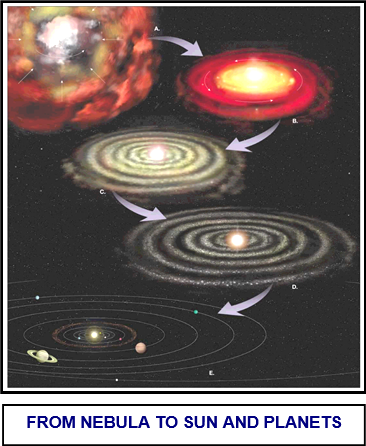 xxxxxIn mathematics, he was the first to perfect the theory of probability, published in his Théorie analytique des probabilités (Analytical Theory of Probabilities) in 1812, and explained in simpler terms two years later in his Essai philosophique sur les probabilités (Philosophical Essay on Probabilities). He applied this theory to the problems of everyday chance, but also employed it in subjects such as statistics, and in various situations in the study of physics and astronomy. In addition, his introduction of the partial differential equation named after him – the “Laplace equation” - proved of immense value in analysing problems in many branches of physics.
xxxxxIn mathematics, he was the first to perfect the theory of probability, published in his Théorie analytique des probabilités (Analytical Theory of Probabilities) in 1812, and explained in simpler terms two years later in his Essai philosophique sur les probabilités (Philosophical Essay on Probabilities). He applied this theory to the problems of everyday chance, but also employed it in subjects such as statistics, and in various situations in the study of physics and astronomy. In addition, his introduction of the partial differential equation named after him – the “Laplace equation” - proved of immense value in analysing problems in many branches of physics.
xxxxxHe also had a number of other interests. He carried out research into optics for example - in which he rejected the theory of light put forward by the English scientist Thomas Young - and he contributed to the ground work then being carried out in the science of electro-magnetism. And he also spent some time working with the French chemist Antoine Lavoisier. They studied the physical problems associated with heat, measuring both linear and cubical expansion, and in 1780 they arrived at the nature of respiration by analysing the breath of a guinea pig.
xxxxxLaplace was born in Normandy, and, after studying at the military school in Beaumont-en-Auge, sent a treatise on the principles of mechanics to the French mathematician Jean d’Alembert. The encyclopedist was impressed with this piece of work and, on his recommendation, Laplace was appointed professor of mathematics at the École Militaire, Paris, at the age of 19. His subsequent research gained him election to the Academy of Sciences in 1785. A man with little interest in politics - at least outwardly - he survived the French Revolution. Indeed, he was made president of the Board of Longitude, assisted in the establishment of the metric system, and, under Napoleon, was generously honoured - awarded the Legion of Honour in 1805, and made a Count of the Empire the following year. He supported the return of the monarchy in 1814, however, and was named a marquis in 1817. 1817.
xxxxxA one-time colleague of Pierre-Simon de Laplace was the outstanding French mathematician and astronomer Adrien Marie Legendre (1752-1833). He made notable advances in the theory of numbers, celestial mechanics and the study of elliptic integrals. He is remembered especially for his school textbook Elements of Geometry, published in 1794; his new methods for determining the orbit of a comet (the so called Legendre’s Nouvelles); and his treatise on elliptic functions. During the French Revolution he was a member of the council which introduced the decimal system, and from 1813 he was chief of the Bureau de Longitudes.
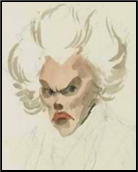 xxxxxAnother outstanding mathematician and astronomer at this time, and one-time colleague of Pierre-Simon de Laplace, was the Frenchman Adrien Marie Legendre (1752-1833). In mathematics, his study of number theory produced both his law of the distribution of prime numbers, and his law of reciprocity of quadratic residues, first proved by the German mathematician Karl Gauss in 1801. He is remembered, too, for his Elements of Geometry. Published in 1794, it proved a valuable school textbook and was used widely in Europe and the United States.
xxxxxAnother outstanding mathematician and astronomer at this time, and one-time colleague of Pierre-Simon de Laplace, was the Frenchman Adrien Marie Legendre (1752-1833). In mathematics, his study of number theory produced both his law of the distribution of prime numbers, and his law of reciprocity of quadratic residues, first proved by the German mathematician Karl Gauss in 1801. He is remembered, too, for his Elements of Geometry. Published in 1794, it proved a valuable school textbook and was used widely in Europe and the United States.
xxxxxAs an astronomer he made some notable advances. In 1783, as part of a larger work, he published a treatise setting out new methods for determining the orbit of a comet, and these methods came to be known as Legendre’s Nouvelles. Later in his career he produced tables on elliptical functions (1826) and then, building upon the work achieved by Leonard Euler and Joseph-Louis Lagrange, reduced elliptic integrals to three standard forms in his Treatise of 1837. He was much admired by Gauss, but was not liked, we are told, by the influential Laplace. This might well account for the scant recognition afforded his achievements during his lifetime.
xxxxxLegendre was professor of mathematics at the École Militaire, Paris, for five years from 1775 to 1780, and, during the French Revolution was one of the three-man council set up to introduce the decimal system. He was appointed a professor at the École Normale in 1795 and, from 1813 was the chief of the Bureau de Longitudes. (The caricature above is the only known portrait in existence!)
xxxxxIt was around this time, in the 1790s, that the American-born British physicist Count Rumford (Benjamin Thompson 1753-1814) made a special study of heat and advanced the modern theory that heat was a form of energy. Making use of a cannon-boring machine, he showed that mechanical energy had been converted into heat energy. He published a paper on his findings in 1798, and this disproved the theory, put forward by the French chemist Antoine Lavoisier and others, that heat was a “caloric” material or “igneous fluid” contained within a given object. Earlier in his career he had conducted useful research into the explosive force of gunpowder, and the velocity of bullets and cannon shot. He was elected a member of the Royal Society in 1779, and played a prominent part in the founding of the Royal Institution, established in London in 1800 to advance technical and scientific knowledge. In 1792 he was awarded the Copley Medal, the highest award of the Royal Society, and four years later he founded the Rumford Medal for this society, given for outstanding research in the study of heat and light.
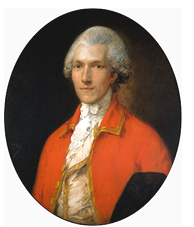 xxxxxIt was in the closing years of the 18th century that the American-born British physicist Count Rumford (Benjamin Thompson 1753-1814) made a special study of heat, and advanced the modern theory that heat was a form of energy. Using a cannon-boring machine, adapted for his experiments, he showed that during the drilling process the heat generated by the drill was too intense to be explained by the idea - put forward by the French chemist Antoine Lavoisier and others - that heat was a fixed quantity of “caloric” material or “igneous fluid”, contained within a given object. Heat, he concluded, was not a material substance (such as a chemical element), but resulted from the mechanical energy consumed by the boring operation. Mechanical energy had been converted into heat energy. In 1798 he presented his paper to the Royal Society: Enquiry concerning the Source of Heat which is excited by Friction.
xxxxxIt was in the closing years of the 18th century that the American-born British physicist Count Rumford (Benjamin Thompson 1753-1814) made a special study of heat, and advanced the modern theory that heat was a form of energy. Using a cannon-boring machine, adapted for his experiments, he showed that during the drilling process the heat generated by the drill was too intense to be explained by the idea - put forward by the French chemist Antoine Lavoisier and others - that heat was a fixed quantity of “caloric” material or “igneous fluid”, contained within a given object. Heat, he concluded, was not a material substance (such as a chemical element), but resulted from the mechanical energy consumed by the boring operation. Mechanical energy had been converted into heat energy. In 1798 he presented his paper to the Royal Society: Enquiry concerning the Source of Heat which is excited by Friction.
xxxxxRumford was born in Massachusetts and, during the American War of Independence, served on the side of the British Crown. When the royalist forces abandoned Boston in 1776, however, he made his escape to London. There, three years later, he was elected a member of the Royal Society in recognition of his useful research into the explosive power of gunpowder, and the velocity of bullets and cannon shot. He was knighted in 1784, and the following year was invited to Bavaria. There he was made a Major General and, during a stay of eleven years, was tasked with reorganizing the country’s armed forces. This achieved, in 1791 he was made a Count of the Holy Roman Empire, taking the name Rumford after the New Hampshire town where he once lived and was married.
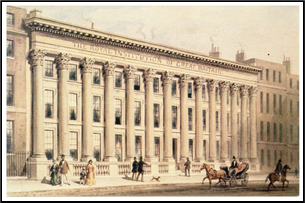
xxxxxHexreturned to England in 1795 and, following his experiments into the nature of heat, he played a major part - together with the English botanist Sir Joseph Banks and others - in the founding of the Royal Institution of Great Britain (illustrated), established in London in 1800 to encourage and advance technical and scientific knowledge. At the same time he appointed the English chemist Humphry Davy, then little known, as its first lecturer, and he was soon joined by the young English chemist and physicist Michael Faraday. As from 1802 Rumford spent his last years in France. He married Lavoisier’s widow, and lived mostly in Paris. At his death he left most of his money to Harvard University and, by his will, the Rumford Professorship was established there in 1816.
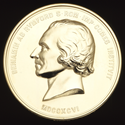
xxxxxIncidentally, inx1792 he received the Copley Medal, the highest scientific award of the Royal Society, and four years later he founded (and was the first recipient of) the Rumford Medal of that society (illustrated), awarded for outstanding research into the phenomena of heat and light. ……
xxxxx…… Whilst in England, Rumford spent some time in making a more efficient fireplace in order to solve the “smoking chimneys of London”. He produced two essays on the subject in 1796 and 1798, detailing the necessary improvements, and as a result the “Rumford fireplace” became extremely popular and has remained so. ……
xxxxx…… During his stay in Bavaria, Rumford also made a name for himself by providing shelter and work for many of the poor living on the streets. And in Munich in 1789 he established the “English Garden” one of the largest city parks in the world. ……
xxxxx…… It was during the closing years of the 18th century that one of the first colleges of technology was opened. Established in Paris in 1794, it was known as the School of Public Works (and later as the École Polytechnique), and it placed emphasis upon the teaching of mathematics and applied science.
G3b-1783-1802-G3b-1783-1802-G3b-1783-1802-G3b-1783-1802-G3b-1783-1802-G3b






 xxxxxJoseph-
xxxxxJoseph- xxxxxHis major work, Mécanique analytique (Analytic Mechanics), produced in 1788, was a brilliant summing up of the advances made in mechanics during the hundred years since Newton. Applying his own calculus of variations, he virtually turned the whole subject into a branch of mathematical analysis. In the field of celestial mechanics he again used findings made earlier by Newton, this time to predict the movement of a planet when affected by the gravitational force exerted by others. Prize-
xxxxxHis major work, Mécanique analytique (Analytic Mechanics), produced in 1788, was a brilliant summing up of the advances made in mechanics during the hundred years since Newton. Applying his own calculus of variations, he virtually turned the whole subject into a branch of mathematical analysis. In the field of celestial mechanics he again used findings made earlier by Newton, this time to predict the movement of a planet when affected by the gravitational force exerted by others. Prize-
 xxxxxAnother outstanding mathematician and astronomer at this time was the Frenchman Pierre-
xxxxxAnother outstanding mathematician and astronomer at this time was the Frenchman Pierre- xxxxxIn mathematics, he was the first to perfect the theory of probability, published in his Théorie analytique des probabilités (Analytical Theory of Probabilities) in 1812, and explained in simpler terms two years later in his Essai philosophique sur les probabilités (Philosophical Essay on Probabilities). He applied this theory to the problems of everyday chance, but also employed it in subjects such as statistics, and in various situations in the study of physics and astronomy. In addition, his introduction of the partial differential equation named after him – the “Laplace equation” -
xxxxxIn mathematics, he was the first to perfect the theory of probability, published in his Théorie analytique des probabilités (Analytical Theory of Probabilities) in 1812, and explained in simpler terms two years later in his Essai philosophique sur les probabilités (Philosophical Essay on Probabilities). He applied this theory to the problems of everyday chance, but also employed it in subjects such as statistics, and in various situations in the study of physics and astronomy. In addition, his introduction of the partial differential equation named after him – the “Laplace equation” - xxxxxAnother outstanding mathematician and astronomer at this time, and one-
xxxxxAnother outstanding mathematician and astronomer at this time, and one- xxxxxIt was in the closing years of the 18th century that the American-
xxxxxIt was in the closing years of the 18th century that the American-



